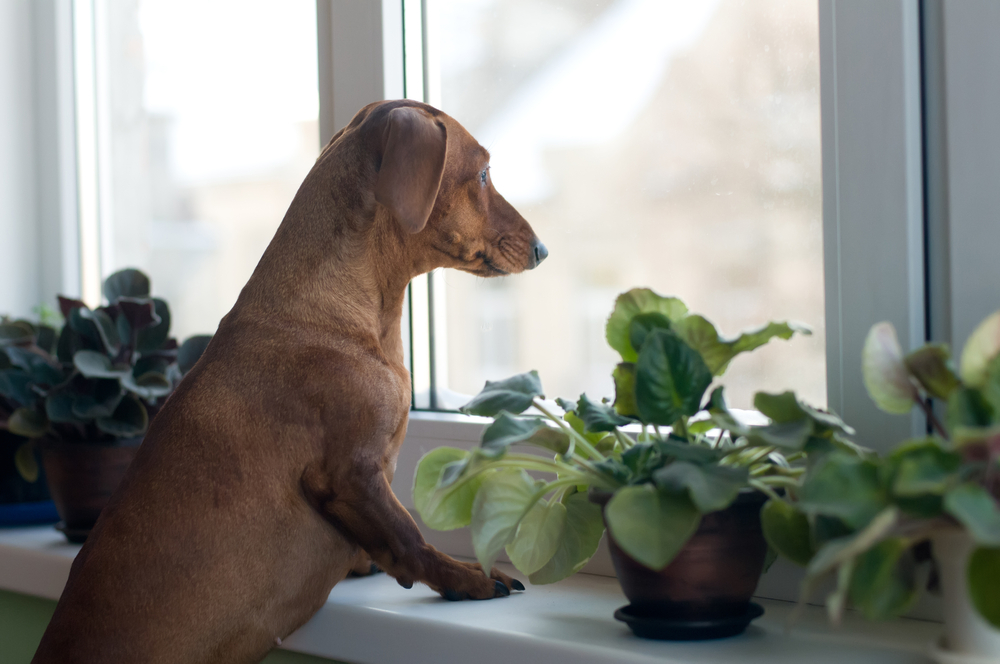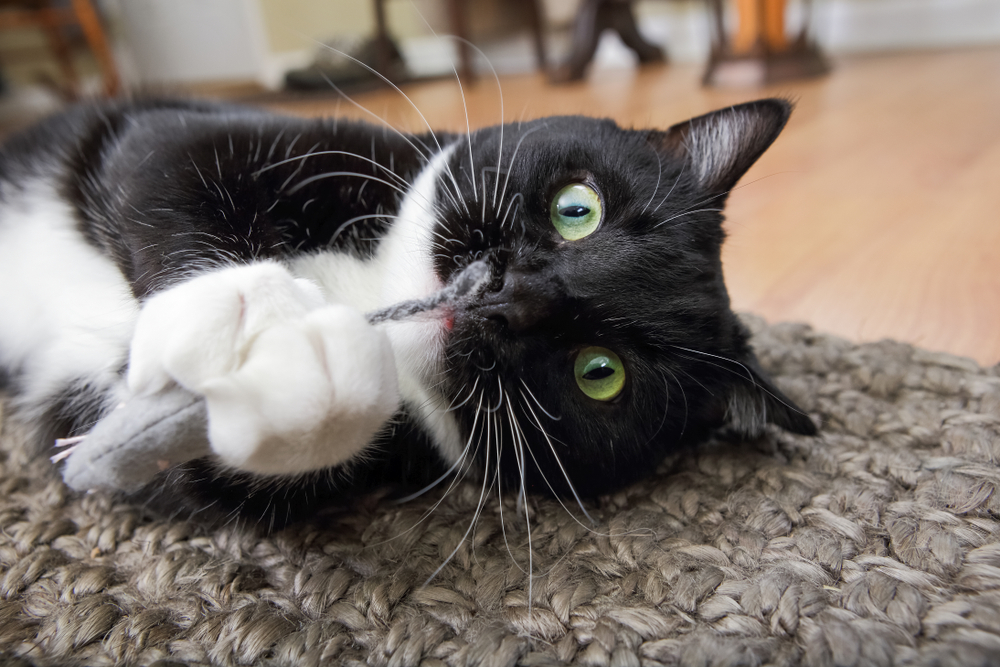
f you or your kids are heading back to school this fall, you already have a lot of your mind. Many pet owners’ major concern is how their pets will adjust to the increased time at home alone. People are not the only ones whose lives have drastically changed since the beginning of the pandemic––pets have rarely spent time away from their families, and have had few opportunities for socialization. Now that your pet will be home alone more, they may experience varying degrees of separation anxiety. Livermore Family Pet Hospital has five tips to help you support your pet during this challenging transition.
#1: Watch your pet for separation anxiety signs
Watch your pet’s body language when you leave and return home. Consider installing a camera so you can peek in on them while you’re away. The following behaviors can signal separation anxiety:
- Excessive yawning
- Lip licking
- Inappropriate chewing
- Trembling
- Drooling
- Increased barking or whining
- Urinating or defecating inside for dogs, or outside the litter box for cats
- Attempting to escape through windows, doors, or crates
#2: Schedule an appointment with your veterinarian
If you think your pet is suffering from separation anxiety, schedule an appointment with your veterinarian to rule out an underlying medical condition that may be affecting your pet’s behavior. Your veterinarian can provide anti-anxiety supplements or medication, as well as behavioral modification resources.
#3: Use desensitization and positive reinforcement with your pet
Dogs go through a socialization period from approximately 3 to 18 weeks of age, and many “pandemic puppies” have not been exposed to new people, animals, and places. Your pet may have been comfortable at home alone pre-pandemic, but they will need time to re-adjust. Desensitization gradually exposes your pet to a stimulus—in this case your absence—starting with many short separations that do not produce anxiety, and gradually increasing the duration of the separation over time. Avoid punishment, because this will only increase your pet’s fear and anxiety. Remember the following, when practicing desensitization with your pet:
- Practice pre-departure cues — If your pet appears anxious when you perform certain rituals, like picking up your keys or putting on a jacket, you can teach them that these cues don’t always mean you are leaving. Throughout the day—ideally when your pet is relaxed—expose them to these triggers, but do not leave. Eventually, they will become desensitized to the cues, and you can begin to incorporate short absences.
- Go slowly — Start by leaving your pet for short periods, keeping your absences shorter than the time your dog takes to become upset—for some pets, that may be only a few minutes. Gradually increase the length of time you are gone, and watch your dog’s body language, to avoid pushing them beyond their fear threshold.
- Stay consistent — Training requires a significant time commitment. Make time each day to work with your dog, and set realistic expectations.
#4: Consider alternatives to leaving your pet alone
Consistent positive reinforcement training, and in some cases, medication, will help your pet feel more comfortable over time. However, you may need to explore alternatives until your pet feels comfortable alone. Options include:
- Taking your dog to work with you, if your company permits pets
- Requesting to work or study from home for part or all of the week
- Arranging for a family member, friend, or dog sitter to stay with your dog during the day
- Dropping your dog off at doggy daycare
#5: Set your pet up for success

Once your pet can handle longer periods of time alone at home, ensure they are calm and comfortable with these tips:
- Exercise your pet regularly — Your dog’s daily exercise routine may look different, but physical activity is more important than ever during times of change. As the saying goes, “ A tired pet is a happy pet.” Walk your dog in the morning, and when you return home. Consider going home midday to walk your dog or hiring a dog walker, to ensure your pet gets the exercise they need.
- Toys and treats — Leave your dog with interactive toys or treats, like a Kong filled with frozen peanut butter, to keep them busy. Don’t forget about the cat—sprinkle a small amount of catnip on their favorite toy, and hide a few treats they can hunt while you’re away.
- Calm sounds — Help your pet cope with a quiet house with soft background noise, such as music or television.
- Calm exits and returns — Avoid fussing over leaving and returning home. Over-the-top gestures can increase your pet’s anxiety, because they will begin to associate these cues with your departure. Simply walk out the door, and return home in the same low-key manner.
Managing your pet’s separation anxiety can be stressful, but remember—your pet is suffering, too. Be patient and understanding with your pet, and yourself, as you navigate your “new normal” together. If your pet displays separation anxiety signs, contact Livermore Family Pet Hospital, and schedule an appointment.

